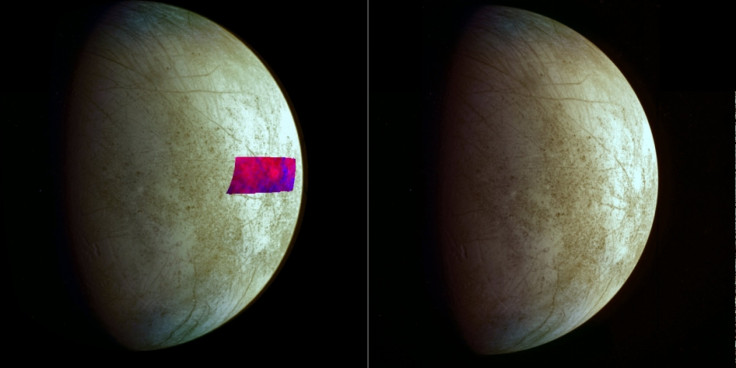Jupiter’s Icy Moon Europa Contains Clay-Like Minerals, Likely Originated From Collision With An Asteroid

Scientists used data from NASA’s Galileo mission and found that Jupiter’s icy moon, Europa, has clay-like minerals, the space agency announced on Wednesday, adding that the extraterrestrial minerals were likely delivered by a spectacular collision between the moon and an asteroid or comet.
According to scientists, although this is the first time such minerals have been identified on Europa's surface, space rocks that deliver such minerals typically also carry organic matter.
“Organic materials, which are important building blocks for life, are often found in comets and primitive asteroids,” Jim Shirley, a research scientist at NASA's Jet Propulsion Laboratory, Pasadena, Calif., said in a statement. “Finding the rocky residues of this comet crash on Europa's surface may open up a new chapter in the story of the search for life on Europa.”
Many scientists believe Europa is the best location in the solar system to find life outside Earth as it has a set of life-supporting conditions, such as a subsurface ocean in contact with rock, an icy surface that mixes with the ocean below, and salts on the surface that create an energy gradient.
In addition, Europa also has a source of heat, which is the flexing that occurs as it gets stretched and squeezed by Jupiter's gravity. According to scientists, all these conditions were likely in place shortly after Europa first came into being in the solar system.
Shirley and his colleagues were able to detect the clay-like minerals, called phyllosilicates, in near-infrared images from Galileo that were taken in 1998. Scientists said that they had used a new technique to pull out as much information as they could from the low-resolution images. According to the scientists, the phyllosilicates appear in a broken ring about 25 miles wide and lie about 75 miles away from the center of a central, 20-mile-wide crater site.
Scientists said that when a comet or asteroid hits the surface vertically at an angle of 45 degrees, the collision would allow some of the space rock's original material to fall back to the surface. A more head-on collision would likely vaporize it or drive that space rock's materials below the surface. However, it is hard to see how phyllosilicates from Europa’s interior could make it to the surface.
According to scientists, if the body that hit Europa was an asteroid, it was likely about 3,600 feet in diameter, and if it was a comet, it was likely about 5,600 feet in diameter. It would have been nearly the same size as the comet ISON before it passed around the sun a few weeks ago, scientists said.
© Copyright IBTimes 2024. All rights reserved.






















